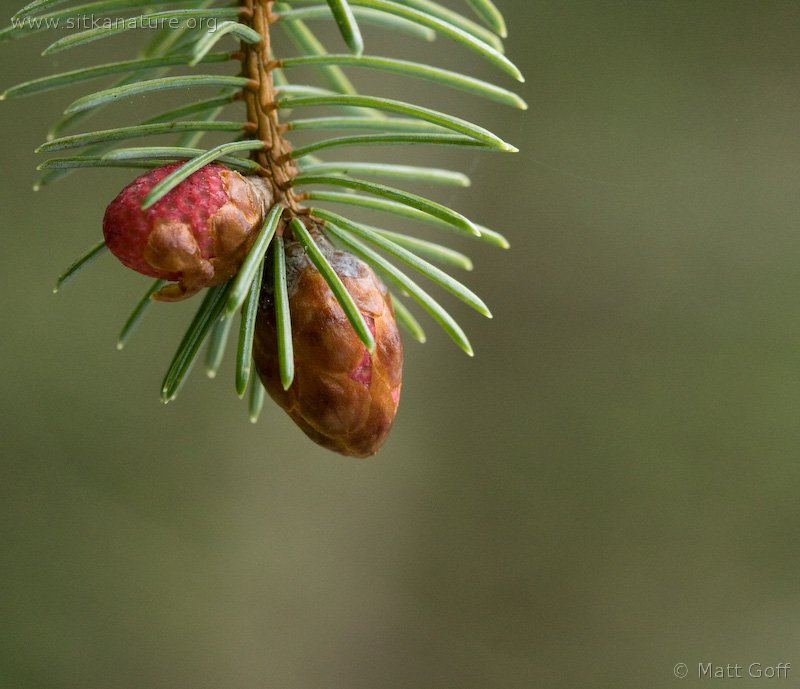A couple of days ago I noticed pollen cones maturing on a Sitka Spruce (Picea sitchensis). For some reason I had not realized that they started with the brown scales just like spruce tips (the new growth). It also occured to me that they grew in the same locations as you might normally expect to find new growth. This suggests that in years when a tree produces pollen cones on a given branch, that branch will not have any new growth. I suppose it’s possible that new growth develops after the pollen cones have dropped, so I will probably try to check on that throughout the summer.
Questions that occur to me include the following:
- When does the tree ‘decide’ to produce pollen cones instead (presumably) of new growth?
- How early is it possible to tell whether a given brown-scaled bud is going to develop into a pollen cone or new growth?
- Is pollen cone production a regular cycle (every x-number of years) or dependent on available energy reserves and/or more or less random?
- How much of a given tree is devoted to pollen cones, and does any given tree tend to have at least a few pollen cones each year?

